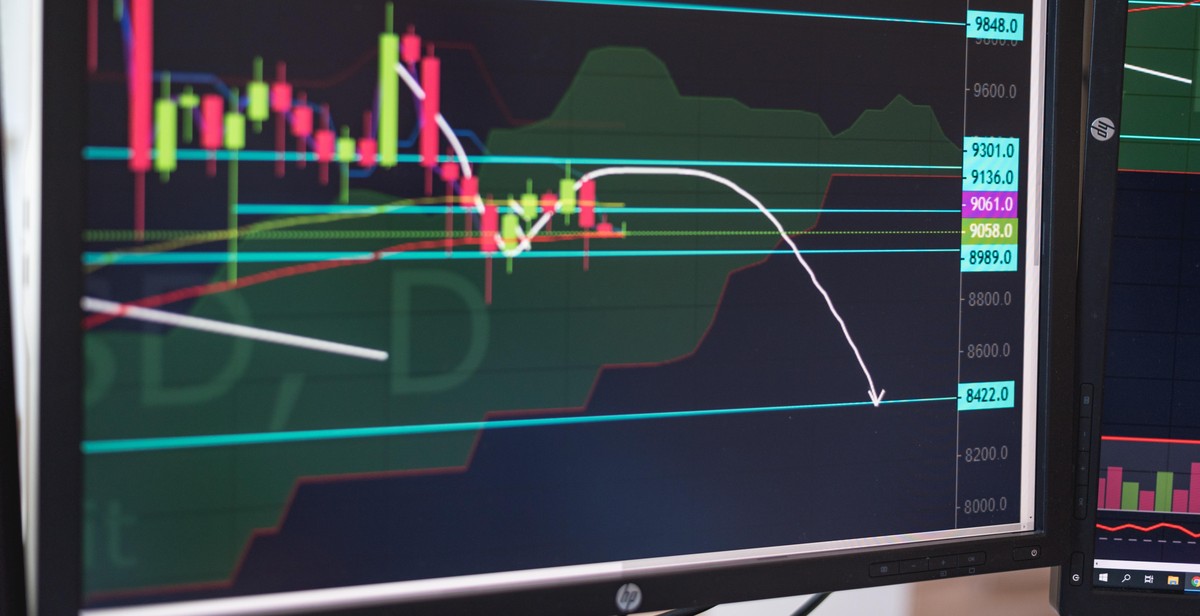How to Manage and Track Your Cryptocurrency Portfolio
Cryptocurrency has become a popular investment option for many individuals, and managing and tracking your portfolio is crucial for ensuring a successful investment strategy. With the volatility of the cryptocurrency market, it’s essential to have a clear understanding of your assets and their performance to make informed decisions. In this article, we’ll explore the best practices for managing and tracking your cryptocurrency portfolio.
Why Manage and Track Your Cryptocurrency Portfolio?
Managing and tracking your cryptocurrency portfolio is essential for several reasons:
- It allows you to monitor the performance of your assets
- It helps you make informed decisions about buying, selling, or holding your assets
- It enables you to stay on top of market trends and news that may impact your investments
- It ensures that you have an accurate record of your holdings for tax purposes
How to Manage and Track Your Cryptocurrency Portfolio
There are several ways to manage and track your cryptocurrency portfolio, including:
- Using a cryptocurrency portfolio tracker
- Keeping a spreadsheet of your assets
- Using a cryptocurrency exchange that offers portfolio management tools
Each method has its advantages and disadvantages, and it’s essential to choose the one that works best for you. In the following sections, we’ll explore each method in more detail.
Why Tracking Your Cryptocurrency Portfolio is Important
If you are an investor in the cryptocurrency market, you know how volatile it can be. The value of your investment can fluctuate wildly in a matter of hours or days. This is why it is crucial to track your cryptocurrency portfolio regularly. Here are three reasons why:
Understanding Your Investment Performance
Tracking your cryptocurrency portfolio allows you to understand how your investments are performing over time. By keeping track of your gains and losses, you can see which investments are doing well and which ones are not. This information can help you make informed decisions about when to buy or sell.
Identifying Trends and Making Informed Decisions
By tracking your portfolio, you can identify trends in the cryptocurrency market. For example, if you notice that a particular coin is consistently performing well, you may want to invest more in it. On the other hand, if you see that a coin is consistently underperforming, you may want to consider selling it. This information can help you make informed decisions about your investments.
Tracking Your Tax Liability
Tracking your cryptocurrency portfolio is also important for tax purposes. In many countries, profits from cryptocurrency investments are subject to capital gains tax. By keeping track of your gains and losses, you can accurately calculate your tax liability.
Overall, tracking your cryptocurrency portfolio is essential for any investor in this market. It allows you to understand your investment performance, identify trends, make informed decisions, and track your tax liability.

Choosing the Right Cryptocurrency Portfolio Management Tool
Managing and tracking a cryptocurrency portfolio can be a daunting task, especially for those who are new to the world of cryptocurrencies. Fortunately, there are several portfolio management tools available on the market that can help simplify the process. When choosing a cryptocurrency portfolio management tool, there are several features to look for:
Features to Look For
- Multi-Exchange Support: A good portfolio management tool should support multiple exchanges, allowing you to track all your holdings in one place.
- Real-Time Data: The tool should provide real-time data on prices, market caps, and other important metrics.
- Portfolio Analysis: The tool should provide detailed analysis of your portfolio, including gains and losses, asset allocation, and performance metrics.
- Security: The tool should have robust security features to protect your data and assets.
- User-Friendly Interface: The tool should have a user-friendly interface that is easy to navigate and understand.
Popular Tools on the Market
There are many portfolio management tools available on the market, but some of the most popular ones include:
| Tool | Features | Price |
|---|---|---|
| CoinTracking | Multi-exchange support, real-time data, portfolio analysis, tax reporting | Free to $1,499 per year |
| Blockfolio | Real-time data, portfolio tracking, news and alerts | Free |
| CoinStats | Multi-exchange support, real-time data, portfolio tracking, news and alerts | Free to $39.99 per year |
It’s important to do your own research and choose a portfolio management tool that meets your specific needs and preferences.

Setting Up Your Cryptocurrency Portfolio
Setting up your cryptocurrency portfolio can be a daunting task, but with the right strategy, it can be a profitable investment. Here are some steps to help you get started:
Selecting Your Cryptocurrencies
The first step in setting up your cryptocurrency portfolio is to select which cryptocurrencies you want to invest in. There are over 4,000 cryptocurrencies available, so it is important to do your research and select the ones that align with your investment goals. Some popular cryptocurrencies include Bitcoin, Ethereum, Litecoin, and Ripple.
Establishing Your Investment Strategy
After selecting your cryptocurrencies, the next step is to establish your investment strategy. This includes determining how much you want to invest, when you want to invest, and how long you want to hold your investments. It is important to have a clear investment strategy to minimize risk and maximize returns.
Determining Your Risk Tolerance
Determining your risk tolerance is an important step in setting up your cryptocurrency portfolio. Cryptocurrencies can be volatile, and prices can fluctuate rapidly. It is important to understand the risks involved and determine how much risk you are willing to take. This will help you make informed investment decisions and minimize losses.
| Selecting Your Cryptocurrencies | Establishing Your Investment Strategy | Determining Your Risk Tolerance |
|---|---|---|
| Do your research and select cryptocurrencies that align with your investment goals. | Establish how much you want to invest, when you want to invest, and how long you want to hold your investments. | Determine how much risk you are willing to take to make informed investment decisions. |
By following these steps, you can set up a cryptocurrency portfolio that aligns with your investment goals, minimizes risk, and maximizes returns.

Monitoring Your Cryptocurrency Portfolio
Once you have created and set up your cryptocurrency portfolio, it is important to regularly monitor and track its performance. This will help you make informed decisions about your investments and adjust your strategy accordingly.
Regularly Updating Your Portfolio Data
It is essential to keep your portfolio data up-to-date by regularly adding new assets and removing any that are no longer relevant. This will ensure that your portfolio accurately reflects your current holdings and allows you to make informed decisions about future investments.
Analyzing Your Performance Data
Monitoring your portfolio’s performance data is crucial to understanding how your investments are performing. This includes tracking metrics such as the overall value of your portfolio, individual asset performance, and any gains or losses. By analyzing this data, you can identify trends and make informed decisions about your investment strategy.
Adjusting Your Strategy Based on Performance
Based on your performance data, you may need to adjust your investment strategy. For example, if a particular asset is consistently underperforming, you may want to consider selling it and investing in a different asset. Additionally, if you notice a trend of certain assets performing well, you may want to consider increasing your investment in those assets.
| Steps to Monitor Your Cryptocurrency Portfolio |
|---|
| 1. Regularly update your portfolio data |
| 2. Analyze your performance data |
| 3. Adjust your strategy based on performance |
By following these steps and regularly monitoring your cryptocurrency portfolio, you can make informed decisions and maximize your returns.

Staying Safe While Managing Your Cryptocurrency Portfolio
Managing your cryptocurrency portfolio can be exciting, but it also comes with risks. As the value of cryptocurrencies continues to rise, there are more and more hackers and scammers trying to steal your coins. To stay safe, it’s important to take the necessary precautions.
Protecting Your Private Keys
Your private keys are the keys to your cryptocurrency wallet. They give you access to your funds, so it’s important to keep them safe. Store your private keys offline in a hardware wallet or a paper wallet and never share them with anyone. Keep in mind that if you lose your private keys, you will lose access to your funds forever.
Using Two-Factor Authentication
Two-factor authentication (2FA) is an extra layer of security that requires you to enter a code in addition to your password. This can prevent hackers from accessing your account even if they have your password. Enable 2FA on your cryptocurrency exchange and wallet accounts to add an extra layer of protection.
Avoiding Scams and Phishing Attempts
Scammers often try to trick people into giving them their private keys or login information. Be wary of unsolicited emails or messages asking for your private keys or login information. Always double-check the URL of the website you’re visiting and never click on links from unknown sources. If you receive an email or message that seems suspicious, contact the company directly to verify its authenticity.
By taking these precautions, you can help protect your cryptocurrency portfolio from theft and scams. Remember to always stay vigilant and keep your private keys safe.
Conclusion
Managing and tracking your cryptocurrency portfolio is crucial to your success in the world of digital currencies. With so many coins and tokens available, it can be overwhelming to keep track of everything and make informed investment decisions.
Key Takeaways
- Use a reliable portfolio tracker to monitor your investments and stay up-to-date on market trends.
- Diversify your portfolio to minimize risk and maximize potential returns.
- Stay informed about the latest news and developments in the cryptocurrency industry.
- Don’t let emotions drive your investment decisions; instead, base them on sound research and analysis.
Final Thoughts
Managing and tracking your cryptocurrency portfolio requires time, effort, and knowledge. However, by following the tips and strategies outlined in this article, you can stay on top of your investments and make informed decisions that can help you achieve your financial goals.
Remember, the cryptocurrency market is highly volatile, and prices can fluctuate rapidly. Therefore, it is essential to stay vigilant and be prepared to adapt your investment strategy as needed.
| Resource | Description |
|---|---|
| CoinMarketCap | A comprehensive cryptocurrency market tracker that provides real-time prices, charts, and market data. |
| Blockfolio | A popular portfolio tracking app that allows you to monitor your cryptocurrency investments and receive price alerts. |
| CryptoCompare | A platform that provides cryptocurrency market data, news, and analysis. |
By using these resources and implementing the strategies outlined in this article, you can manage and track your cryptocurrency portfolio like a pro and potentially achieve significant returns on your investment.
